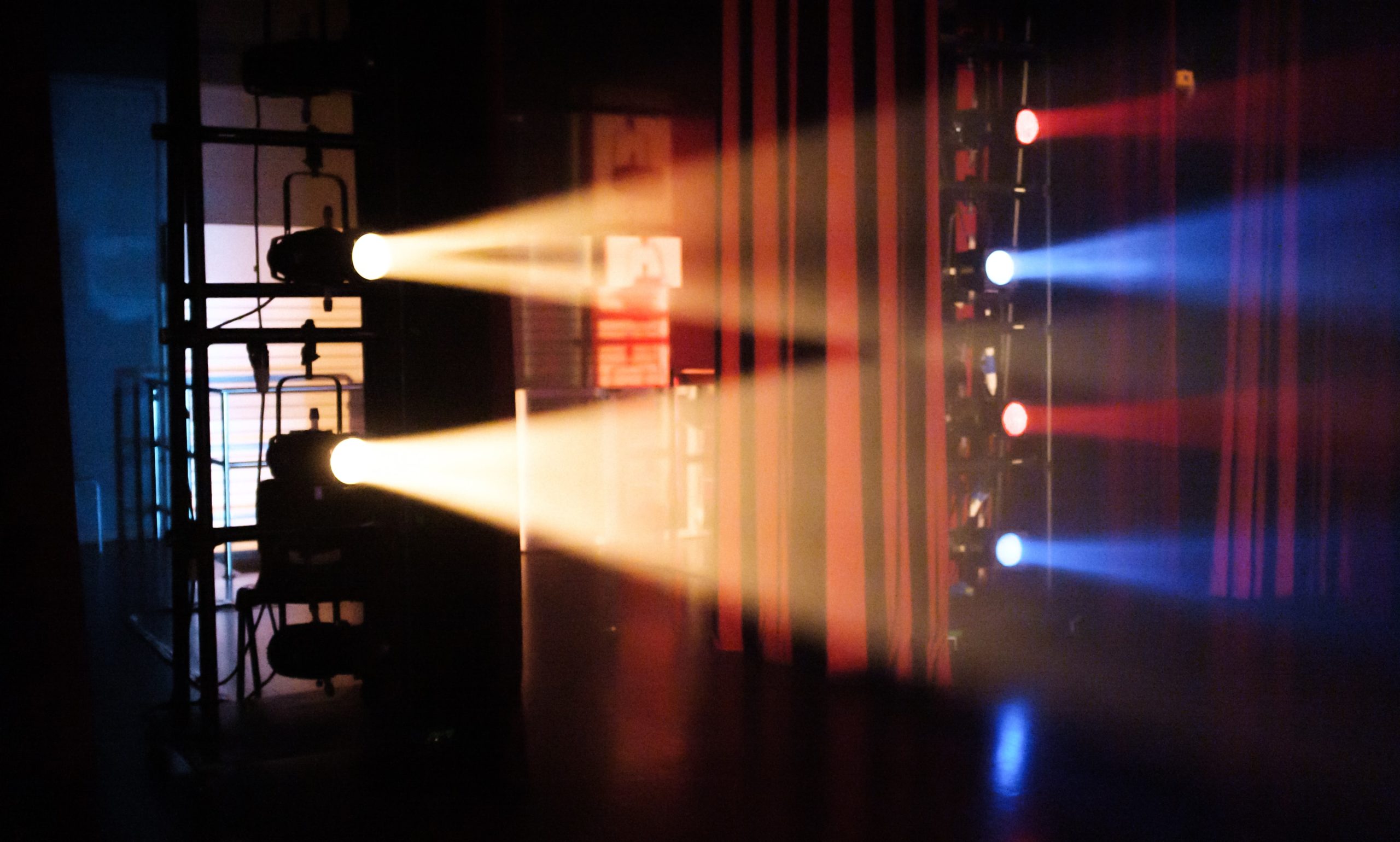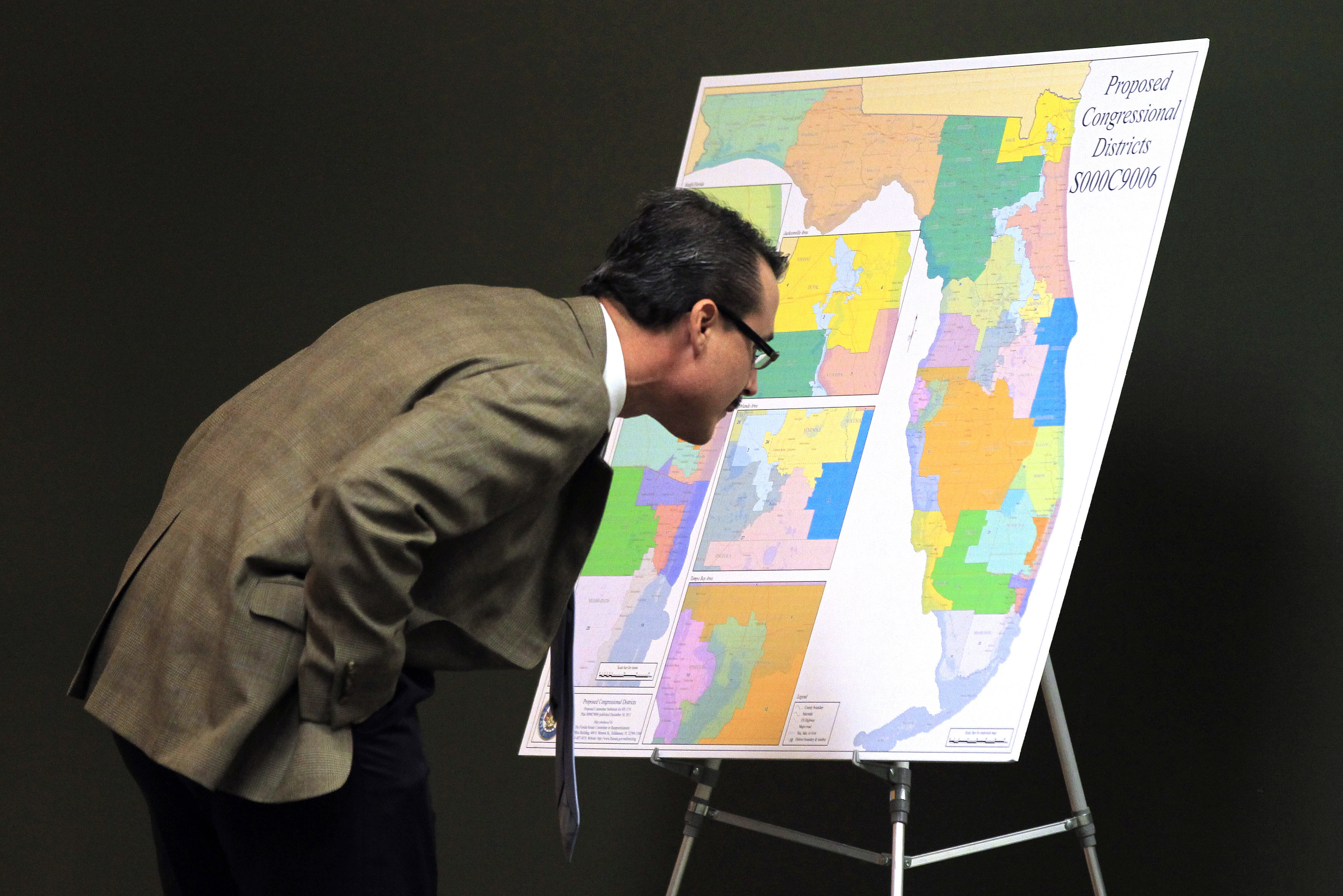Addressing Gender Inequity in Theatrical Design
By Brídín Clements
I. Executive Summary
The field of theatrical design continues to be dominated by cisgender men. Women consistently leave the field due to discrimination, workplace harassment, and lack of support for working parents. To address the gender inequity in theatrical design and more broadly across the performing arts industry, I recommend that producing entities partner with labor organizations to implement transparent and equitable hiring practices, adjust the production schedule, and develop support systems for working families.
II. Introduction
Many think of theatre as a progressive field, but if you take a step back and look at who writes, directs, and designs on Broadway and in professional theaters across the country, you will find that the industry’s workforce is dominated by white cisgender men. The status quo in the professional theatre is unacceptable when it comes to diversity, equity, and inclusion. While acknowledging the breadth of this inequity within the industry, the following policy proposal focuses specifically on theatrical design and gender equity as a microcosm of the issues that are ubiquitous in the industry. Women are underrepresented in the fields of sound design, lighting design, video design, and scenic design.[i] Even in the field of costume design, where women are well-represented, they encounter many of the same obstacles faced by colleagues in other design-focused specializations. As the performing arts “reopen” after having halted due to the COVID-19 pandemic, this is an ideal time to consider how to address this underrepresentation.
III. Scope
Theatrical designers in the United States are the primary stakeholders impacted by this policy proposal. This spans across design areas: scenery, costume, lighting, sound and video. The policy impacts designers of all gender identities and is focused on protecting women-identifying and non-binary designers. The proposal is targeted at producing entities – both commercial producers and nonprofit producing organizations – across the U.S. performing arts field. While acknowledging the racial inequities in the field and the important intersectionality of gender, race, and class, the scope of this paper is limited to addressing gender inequity. Acknowledging that gender is a non-binary spectrum, this policy proposal centers the traditional cultural expectations of the conventional male-female binary as it relates to labor in the United States.
IV. The Issue at Hand
Why is it important that there be more women designers? Diversity and inclusion benefit individuals, productions, organizations, and society. Diverse organizations are more successful at recruiting and retaining talent, maximizing talent and productivity, and innovating, and diversity enhances decision-making amongst teams. Mixed-gender teams can better manage group conflict compared to homogenous teams and can better maximize creativity among team members.[ii] In a creative field such as theatrical design, these enhancements can have a major effect on the quality of the product. The design process is reliant on the exchange of ideas, and when an organization values gender diversity it encourages diverse idea exchange.[iii] Designers have an intimate relationship with the director and actors on a production and are important creative contributors. Cultural competency is key; having varied perspectives around the table is essential to making good theatre and attracting a diverse audience. As The Experts’ Guide to Marketing the Arts explains, weaving equitable practices into the fabric of the institution builds trust within the community which can lead to a more diverse audience base.[iv]
In 2018, the Theatrical Sound Designers and Composers Association published a statement calling attention to the lack of diversity amongst Broadway sound designers. Of the 34 shows that opened on Broadway in the 2017-2018 season, white male sound designers or design teams led 32 of them. Sound design began its use on Broadway in the 1960’s and since then, only five women have ever been hired to sound desig[1] [2] n a show, and to this day, no woman has ever been the sole sound designer of a Broadway musical. Between 2014 and 2018, women sound designed 3% of Broadway productions.[v]
Tim Donahue and Jim Patterson’s “realistic guide” book for theater careers discusses how theatrical producers and artistic directors continue to hire the same people over and over again.[vi] Anyone in the industry will tell you that getting jobs in the theatre is all about who you know. Before they even have an applicant pool, an organization may inadvertently exclude women by sourcing candidates from their internal networks or using gendered language in the job description. During the hiring process, an organization may exhibit unintentional bias if they have a non-diverse hiring committee, conduct interviews without a standardized format or rubric, or don’t promote open dialogue about bias and self reflection amongst evaluators.[vii] The in-network hiring norm in the theatre industry creates a barrier to entry for many emerging professionals, particularly designers from underrepresented communities.
Each year since 2015, lighting designer Porsche McGovern has conducted and published a study on who designs productions in the League of Resident Theatres (LORT) by gender pronoun. In 2020, McGovern found that while the field is steadily inching toward gender parity, it is happening extremely slowly. Over the first six seasons of the study, the percentage of she designers in positions increased 6% overall from 27% to 33%.[viii] McGovern has identified valuable relationships with respect to hiring practices: the findings show that productions with a woman director are more likely to hire women designers, and organizations with women artistic directors are more likely to hire women directors. This data points to the lack of equitable structures in organizations and calls for us to closely examine our hiring systems in order to achieve equity.
Since 2014, the League of Professional Theatre Women’s Women Count report has collected and published analyses of production credits to assess gender parity in theatre hiring decisions. They ask whose plays are being done, who is directing them, and how many women are being hired for theatrical off-stage roles in New York’s theatres beyond Broadway. Their goal is to change the conversation from anecdotes to action plans to support advocacy efforts on behalf of women playwrights, performers, and offstage theatre workers. Some highlights of their research findings on theatrical seasons from 2014 through 2018 include:
- Set designer credits are generally less than one third women
- Lighting designers are overwhelmingly men
- Costume designers are primarily women
- Sound designer credits are one-fifth women across the seasons[ix]
This demonstrates that off-Broadway, women are hired more often than on-Broadway. Sound designers, for example, are 20% women in New York’s theatres beyond Broadway and only 3% on Broadway. In the cases where Off-Broadway productions move to Broadway, they often bring their original design teams with them. Therefore we can take the data from theatres beyond Broadway as a positive indicator that the needle may be moving, just very slowly. However, these numbers also point to the troublesome hiring practices on Broadway. Broadway is the epicenter of the United States theatre industry and Broadway producers are seen as leaders in the field. Broadway productions should be matching their fervor for innovation and exceptional performance in their implementation of equitable practices. Others in the industry look to Broadway to set an example, and widespread adoption of changes in hiring and improved working conditions would be kickstarted if Broadway took the lead.
A recent survey from Millikin University, drawing on 589 responses from female-identifying designers and production personnel, found that the two key obstacles are gender discrimination and the lack of support for working parents. Ninety percent of study respondents reported having experienced a negative work environment, gender-based harassment, and/or pay disparity. Respondents worked in a number of theatrical disciplines from stage management to lighting production to scenic design.[x] The fields with the highest instances of harassment were in sound design, lighting production, and lighting design; Over ninety percent of women who work in those fields reported experiencing gender discrimination.[xi] Of those who reported having experienced a negative work environment, fifty percent reported leaving the field, citing discrimination, workplace harassment, and lack of support for parents as their reasons. They provided examples such as being demoted after the employer found out they were pregnant, losing their position after a very short maternity leave, or being told that they would not progress because they chose to have children over having their career be their main priority.[xii]
Another barrier for designers is the production schedule. The typical Broadway schedule includes twelve-hour rehearsals which for many production staff end up being fourteen- to sixteen-hour work days.[xiii] There aren’t just one or two long days in the process – it could be weeks of tech rehearsals including the notorious “ten-out-of-twelves” – twelve-hour rehearsals including ten hours of work plus a two-hour meal break – and designers may spend many weeks per year in tech.
While these issues affect all people who work in design fields, they disproportionately impact women. Researchers have found that even in organizations that promote women’s advancement and support the continued employment of mothers after childbirth, the custom of working long hours is strongly tied to the ideology of the separate spheres, a gendered division of labor.[xiv] While the extreme work schedule required for theatrical designers may be considered unsustainable or unhealthy for all, the asymmetry in caregiving expectations makes it a more significant factor on women designers’ choice to continue in the industry. It is also important to note that not all women experience these workplace inequities in the same way. Kimberlé Crenshaw uses the term structural intersectionality for the conceptualized location of Black women at the intersection of race and gender, proposing that Black women experience sexism differently to that experience by white women and that the experience of Black women is ‘greater than the sum of racism and sexism’.[xv] Women of color experience occupational and economic disadvantages that reflect the ways both race and gender affect their work experiences.[xvi] Considering the structural intersectionality between race and gender, we can infer that BIPOC women are particularly impacted by the inequitable working conditions in theatrical production. [3]
V. Current Efforts to Address the Issue: Research & Analysis
Based on these research findings, it is clear that gender parity in the field of theatrical design is a problem and that some specific difficulties women face in the field are: inequitable hiring practices, workplace discrimination, lack of support for working parents, and unsustainable work schedules. Many arts organizations and coalitions are already working to address the gender inequity in the field.
Currently, there is a movement of theatre professionals advocating to abolish the ten-out-of-twelve technical rehearsal that is an industry standard. The American Shakespeare Center has enacted a series of changes they refer to as “a jumping-off point for righting a history of wrongs.” One of their commitments is a 40-hour work week. They have implemented a five-day work week, paid vacations, and holidays or holiday equivalents for all. They acknowledge that while there are budgetary implications, reducing work hours allows their actors and production staff with families to stay in business.[xvii] The elimination of the ten-out-of-twelve and implementing time-off policies are systemic changes that organizations can make to support all employees; however, due to the cultural expectations placed on women, these changes can be particularly impactful for working mothers.
In 2014, Equity in Theatre (EIT) was founded as a collaborative initiative formulated to redress the underrepresentation of women and other marginalized communities in Canadian theatre. EIT has rolled out a four-pronged campaign involving a preparatory research study, a website dedicated to women in theatre, a day-long symposium held in April 2015, and various ongoing live events. These types of initiatives help raise awareness and provide a resource for theatre professionals who have experienced bias in the workplace, but they do not have a way to sanction hiring organizations who choose not to get involved.
In 2015, a group of Chicago artists created Not in Our House (NIOH), an advocacy organization for victims of sexual harassment in the theatre industry. The initiative galvanized the Chicago theatre community garnering wide support. Serving as a resource for all members of the theatre community, NIOH raises awareness of many problematic industry expectations, including some that impact designers. This collective developed the Chicago Theatre Standards, an initiative born of artists and administrators working together toward a cultural paradigm shift away from turning a blind eye to sexual harassment, discrimination, violence, and bullying in theatres and towards mentoring, prevention, and accountability.[xviii] Theatres that choose to adopt the standards seek to enhance safety in their theatres and to provide a process for response without reprisal when conditions are unsafe.
The 2018 Broadway production of The Lifespan of a Fact was the first Broadway play to have an all-female design team. Most of the designers had children and several of those children were very young. When putting together the team, director Leigh Silverman asked what the designers would need in order to manage the long hours required for preparing a new stage production. They ended up converting a dressing area into a lactation room, a space with a lock, an outlet, a chair and a refrigerator so women could breast-pump. They also set aside a play space so that designers could have a childcare option in the theatre.[xix]
VI. Obstacles
Many of these challenges are not specific to the performing arts field; other industries have developed HR practices to create equitable hiring structures, sustainable work schedules, and provide support for working parents… Why is the professional theatre field so far behind? A significant challenge is that designers are typically freelancers, hired on a per-project basis by arts organizations or producers. Systemic shifts like changing hiring practices are particularly difficult because of the temporary nature of most theatre jobs and the fact that designers are hired for such short periods of time. If an organization is only hiring someone for a month or two, why should it be their responsibility to protect the contractor from discrimination or to provide benefits such as on-site childcare? Because the entire industry relies on freelancers. Supporting freelancers who work for your organization will encourage them to continue to work for you, and creating supportive environments will influence designers’ decisions to stay in the field, making for a more diverse dialogue. In time, these changes can be expected to improve quality of life for theatre professionals while also elevating the creativity behind the production process.
VII. Recommendations
While this research has been particularly focused on theatrical designers, many of these issues are pervasive throughout the performing arts industry and the following recommendations could also positively impact the workplace for playwrights, directors, stage managers, backstage crew, and all production personnel. I recommend that U.S. professional theatre associations and labor unions come together to develop a cultural document like the Chicago Theatre Standards, creating awareness, standards, and procedures to improve working conditions in the theatre. To create meaningful and long-lasting change, these changes must be incorporated into the labor agreements between producing organizations, trade associations, and labor unions. Working with these entities is the way to guarantee consistency in practices in a field that relies so heavily on freelance contract labor. With guidance from these associations and unions, I recommend producers and arts organizations begin with a three-pronged approach:
- Implementing transparent and equitable hiring practices
- Adjusting the production schedule
- Developing support systems for working families
How do we break down the barriers to entering the industry? Transparent and equitable hiring practices may include:
- Creating job postings for every open position and requiring that every candidate formally apply and interview
- Listing minimal required qualifications in job ads, which helps prevent people of color and women from self-selecting out [xx]
- Directly recruiting candidates from underrepresented communities
- Requiring that hiring committees create a rubric on which to evaluate candidates so candidates are assessed on an equal basis
Breaking down the barriers to entry addresses part of the issue, but without further systemic change, we are likely to continue seeing women leave the field by mid-career. Reimagining the standard production schedule and developing support systems for working parents are two of the concrete steps organizations can take to retain women workers. Adjusting the production schedule may involve implementing a standard five-day work week and eliminating twelve- or fourteen-hour rehearsals from the standard tech schedule. In addition to these two changes, managers can assess production staffing structures to see if there are ways to build in additional coverage for positions, so if someone has to miss a professional engagement due to a family obligation, someone else can cover the responsibility and no one feels like they have to choose between their family’s wellbeing and the success of the show.
Support for working parents can include giving pregnant women reserved parking spots, implementing a paid family leave policy, creating a lactation room onsite, providing two-bedroom housing options for artists, and adding contractual allowances for parents to adjust their work schedules or submit conflicts due to family commitments. In an essay about Creating a Family-Friendly Work Environment, Devon Berkshire suggests that the following operating principles should be at play when considering family-friendly work practices. Berkshire proposes that no true change can be successful without:
- Making space for this in the fabric of the organization. These changes are not about creating a budget line item, but thoughtfully undergoing a shift in organizational culture.
- Creating dialogue amongst colleagues. Spaces only become more inclusive if people talk about what they need from each other.
- Breaking down stigmas about parents (especially of young children) and their ability to perform, on our stages and off.
- Understanding the moral and business imperatives. Non-profit theatres could stand to avoid turnover and advance equity and inclusion. Making employees feel valued in the totality of their lives is one way to lead this charge.[xxi]
The extensive gender inequities present in the performing arts industry will not be solved through these initial steps alone. A partnership between producing entities and labor organizations to implement transparent and equitable hiring practices, adjust the production schedule, and develop support systems for working families will help address the reasons why women tend to leave the field of design. While these recommendations form a strong foundation for change, it will require consistent explicit efforts to achieve gender equity.
Author

Brídín Clements is an NYC-based producer and manager in the performing arts and a passionate advocate for the importance of arts education. Currently, Brídín is Department Administrator in NYU Tisch’s Undergraduate Film & Television Department and is pursuing a Masters in Public Administration at NYU’s Robert F. Wagner Graduate School of Public Service. Brídín also runs a handmade greeting card company in great haste and offers day-of coordination for weddings in the tristate region.
Bibliography
Agarwal, P., & Farndale, E. High-performance work systems and creativity implementation: The role of psychological capital and psychological safety. Human Resource Management Journal, 27(3), 440–458. 2017. https://doi.org/10.1111/1748-8583.12148
Ammerman, C., & Groysberg, B. Glass Half-Broken : Shattering the Barriers That Still Hold Women Back at Work. Boston, Massachusetts: Harvard Business Review Press, 2021. https://search-ebscohost-com.proxy.library.nyu.edu/login.aspx?direct=true&db=nlebk&AN=2518051&site=eds-live.
Asare, Janice Gassam. “Gender Equity Is Useless Without Racial Equity.” Forbes, 2020. https://www.forbes.com/sites/janicegassam/2020/03/07/gender-equity-is-useless-without-racial-equity/.
Berkshire, Devon. “Creating a Family-Friendly Work Environment.” HowlRound Theatre Commons, December 11, 2017. https://howlround.com/creating-family-friendly-work-environment.
“BIPOC Demands for White American Theatre.” We See You W.A.T. Accessed December 10, 2020. https://www.weseeyouwat.com.
Burton, Rebecca, and Laine Zisman Newman. “Equity in Theatre: A Project for Change.” Canadian Theatre Review 165, 2016. https://muse.jhu.edu/article/609608.
“Chicago Theatre Standards Pilot Project – #NotInOurHouse.” Accessed December 12, 2020. https://www.notinourhouse.org/chicago-theatre-standards-pilot-project/.
Diversity in Sound Design from the Women of TSDCA. TSDCA. Theatrical Sound Designers and Composers Association, 2018. https://tsdca.org/diversity-in-sound-design-statement-2018/.
Donahue, Tim, and Jim Patterson. Theater Careers: A Realistic Guide. University of South Carolina Press, 2012.
Gambles R., Lewis S. and Rapoport R. The Myth of Work–life Balance: The Challenge of Our Time for Men, Women and Societies. Chichester: Wiley, 2006.
Garrity, Caitlyn. “Building a Better Workplace; Women+ Increasingly Abandon Technical Theatre over Lack Of Parity and Equity,” Theatre Design & Technology (2019): 23–31.
Houseworth, Ally. The Experts’ Guide to Marketing the Arts. Third Edition. National Arts Marketing Project. Americans for the Arts, 2017.
Kahn, W. A. Psychological conditions of personal engagement and disengagement at work. Academy of Management Journal, 33(4), 692–724. 1990. https://doi.org/10.5465/256287
Kizer, M. “The ten out of twelve: It’s a lie.” Scenic & Lighting Design. Scenic & Lighting Design. 2021. Retrieved October 27, 2021, from https://scenicandlighting.com/article/the-ten-out-of-twelve-its-a-lie/.
McBride A, Hebson G, Holgate J. Intersectionality: are we taking enough notice in the field of work and employment relations? Work, Employment and Society. 2015;29(2):331-341. doi:10.1177/0950017014538337
McGovern, Porsche. “Who Designs and Directs in LORT Theatres by Pronoun: 2020.” HowlRound Theatre Commons, October 26, 2021. https://howlround.com/who-designs-and-directs-lort-theatres-pronoun-2020.
McGovern, Porsche. “Who Designs and Directs in LORT Theatres by Pronoun: 2019.” HowlRound Theatre Commons, December 16, 2019. https://howlround.com/who-designs-and-directs-lort-theatres-pronoun-2019.
Nemoto, K. Long working hours and the corporate gender divide in Japan. Gender, Work & Organization, 20(5), 512–527. 2012. https://doi.org/10.1111/j.1468-0432.2012.00599.
Paulson, Michael. “Taking Your Child to Work, When Your Job Is Making Theater .” New York Times, November 6, 2018. https://www.nytimes.com/2018/11/06/theater/women-theater-work-life-balance.html.
Steketee, Martha Wade, and Judith Binus. “Women Count IV: Women Hired Off-Broadway 2013-14 through 2017-18 .” League of Professional Theatre Women, n.d.
Stout, Jennifer, Sojourna Cunningham, and Samantha Guss. “Challenging the ‘Good Fit’ Narrative: Creating Inclusive Recruitment Practices in Academic Libraries,” Association of College & Research Libraries, January 1, 2019, 17–19.
Turban, Stephen, Dan Wu, and Letian Zhang. “Research: When Gender Diversity Makes Firms More Productive.” Harvard Business Review, 2019. https://hbr.org/2019/02/research-when-gender-diversity-makes-firms-more-productive.
Warren, Jim. “You Say You Want a Revolution.” AMERICAN THEATRE, 2020. https://www.americantheatre.org/2020/10/29/you-say-you-want-a-revolution/.
“Why Diversity and Inclusion Matter: Quick Take.” Catalyst, June 24, 2020. https://www.catalyst.org/research/why-diversity-and-inclusion-matter/.
Wingfield, A. H. Women are advancing in the workplace, but women of color still lag behind. Brookings. 2021. Retrieved October 26, 2021, from https://www.brookings.edu/essay/women-are-advancing-in-the-workplace-but-women-of-color-still-lag-behind/.
Endnotes
[i] McGovern, “Who Designs and Directs in LORT Theatres by Pronoun: 2020.”
[ii] “Why Diversity and Inclusion Matter: Quick Take.”
[iii] Turban, Wu, and Zhang, “Research: When Gender Diversity Makes Firms More Productive.”
[iv] Houseworth, Ally. The Experts’ Guide to Marketing the Arts.
[v] Diversity in Sound Design from the Women of TSDCA.
[vi] Donahue and Patterson, Theater Careers: A Realistic Guide.
[vii] Ammerman and Groysberg. Glass Half-Broken : Shattering the Barriers That Still Hold Women Back at Work.
[viii] McGovern, “Who Designs and Directs in LORT Theatres by Pronoun: 2019.”
[ix] Steketee and Binus, “Women Count IV: Women Hired Off-Broadway 2013-14 through 2017-18 ,” 1–3.
[x] Garrity, “Building a Better Workplace; Women+ Increasingly Abandon Technical Theatre over Lack Of Parity and Equity,” p. 24.
[xi] Garrity, “Building a Better Workplace; Women+ Increasingly Abandon Technical Theatre over Lack Of Parity and Equity,” p. 25.
[xii] Garrity, “Building a Better Workplace; Women+ Increasingly Abandon Technical Theatre over Lack Of Parity and Equity,” p. 27.
[xiii] Kizer, M. “The ten out of twelve: It’s a lie.”
[xiv] Nemoto, K. “Long working hours and the corporate gender divide in Japan.” Gender, Work & Organization.
[xv] McBride, Hebson and Holgate. “Intersectionality: are we taking enough notice in the field of work and employment relations?” Work, Employment & Society
[xvi] Wingfield, “Women are advancing in the workplace, but women of color still lag behind”
[xvii] Warren, “You Say You Want a Revolution.”
[xviii] “Chicago Theatre Standards Pilot Project – #NotInOurHouse.”
[xix] Paulson, “Taking Your Child to Work, When Your Job Is Making Theater .”
[xx] Stout, Cunningham, and Guss, “Challenging the ‘Good Fit’ Narrative: Creating Inclusive Recruitment Practices in Academic Libraries,” 17–19.
[xxi] Berkshire, “Creating a Family-Friendly Work Environment.”
Photo Credit: Unsplash




